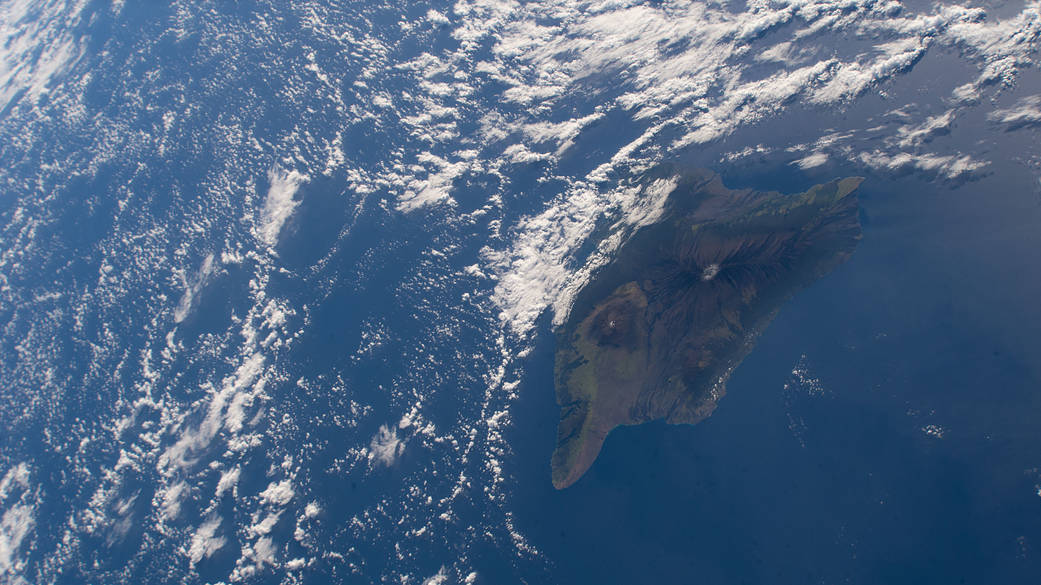Hawaii’s big island and its two major volcanoes Mauna Kea and Mauna Loa rest under a partly cloudy sky on Feb. 8, 2022, in this view from the International Space Station.
Mauna Loa, the world’s largest active volcano had been quiet for nearly 40 years. However, in 2022, the volcano began to stir, showing increased numbers of small earthquakes and subtle swelling of certain land surfaces in September. On Nov. 27, fountains of lava began spurting from the mountain’s Northeast Rift Zone and streams of molten rock flowed to the north.
Ten days into the eruption, a NASA aircraft conducted its first flight over the erupting volcano. The aircraft carried NASA’s Uninhabited Aerial Vehicle Synthetic Aperture Radar system, which was used to map the volcano’s topography in fine detail with a Ka-band instrument called GLISTIN-A. Teams from NASA and the United States Geological Survey used data from that sensor to map the thickness of those flows.
Image Credit: NASA



























